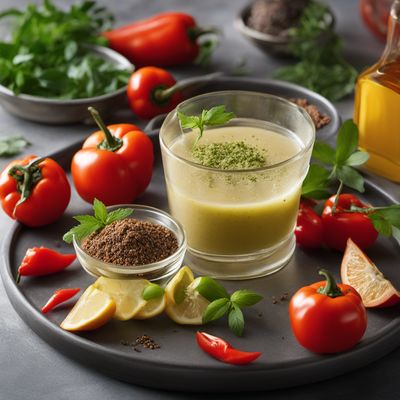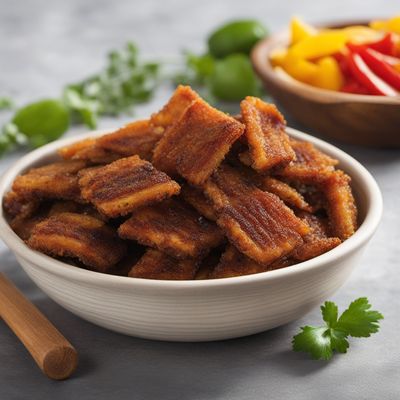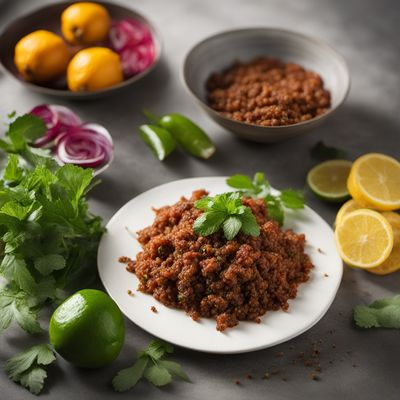
Ingredient
Gold of pleasure seeds and similar-
The Nutty Marvel
Gold of pleasure seeds, also known as camelina seeds, are small golden seeds with a nutty flavor and a crunchy texture. These seeds have a long history of cultivation and have been used in various cuisines for their nutritional benefits and unique taste.
Origins and history
Gold of pleasure seeds have been cultivated for centuries and were historically used as an oilseed crop in Europe. They were highly valued for their high oil content and were used for culinary purposes, as well as for medicinal and cosmetic applications. Today, these seeds are gaining popularity for their nutritional profile and culinary versatility.
Nutritional information
Gold of pleasure seeds are a good source of omega-3 fatty acids, which are beneficial for heart health and brain function. They also contain antioxidants, fiber, and protein, making them a nutritious addition to meals. These seeds are relatively low in calories and are a good source of essential minerals, such as magnesium and phosphorus.
Allergens
Gold of pleasure seeds may be allergenic to individuals with seed or nut allergies. It is important to exercise caution and consult with a healthcare professional if you have any known allergies or sensitivities.
How to select
When selecting gold of pleasure seeds, look for seeds that are golden in color and have a fresh aroma. Avoid seeds that appear dull or have a rancid smell, as this may indicate poor quality or spoilage. Opt for organic or sustainably grown seeds whenever possible.
Storage recommendations
To maintain the freshness and quality of gold of pleasure seeds, store them in an airtight container in a cool, dark place, such as a pantry or cupboard. This will help prevent the seeds from becoming rancid or losing their flavor. Proper storage can extend the shelf life of the seeds for several months.
How to produce
Gold of pleasure seeds can be grown in home gardens or small-scale farms with proper soil preparation and care. They require well-drained soil and prefer cooler climates. Sow the seeds directly in the ground or in containers, and provide regular watering and sunlight for optimal growth.
Preparation tips
Gold of pleasure seeds can be used as a topping for salads, yogurt, or oatmeal, adding a nutty crunch to the dish. They can also be ground into a powder and used as a gluten-free flour substitute in baking. Additionally, these seeds can be toasted and used as a garnish for stir-fries or roasted vegetables.
Substitutions
Sesame seeds can be used as a substitute for gold of pleasure seeds, as they have a similar nutty flavor and crunchy texture. However, keep in mind that the flavor profile may differ slightly. Chia seeds or flaxseeds can also be used as alternatives, although they have a different texture and nutritional profile.
Culinary uses
Gold of pleasure seeds are commonly used in salads, baked goods, and stir-fries. They can be sprinkled on top of breads or pastries before baking, or used as a crunchy topping for roasted vegetables. These seeds can also be incorporated into energy bars or granola for added nutrition and flavor.
Availability
Gold of pleasure seeds are commonly cultivated in Europe, particularly in countries like Germany, France, and Sweden. They are also grown in other parts of the world, including North America and Australia.
More ingredients from this category
Recipes using Gold of pleasure seeds and similar-

Khao Phat Amerikan - Thai-Inspired American Fried Rice
Thai Fusion Fried Rice: A Flavorful Blend of East and West

Houria with a Twist
Spicy Tomato and Pepper Dip: A Tunisian Delight

Sugo Schiattariciati with Homemade Pasta
Hearty Tomato Meat Sauce with Handmade Pasta

Maritime Style Cabbage and Noodles
Seafarer's Delight: Maritime Style Cabbage and Noodles

Jamaican-style Crispy Eel Slices
Island Delight: Crispy Jamaican Eel Slices with a Tropical Twist

Encebollado de Pescado (Ecuadorian Fish Soup)
Ocean Delight: A Flavorful Ecuadorian Fish Soup

Jamaican Pommerac Chow
Tropical Delight: Jamaican Pommerac Chow